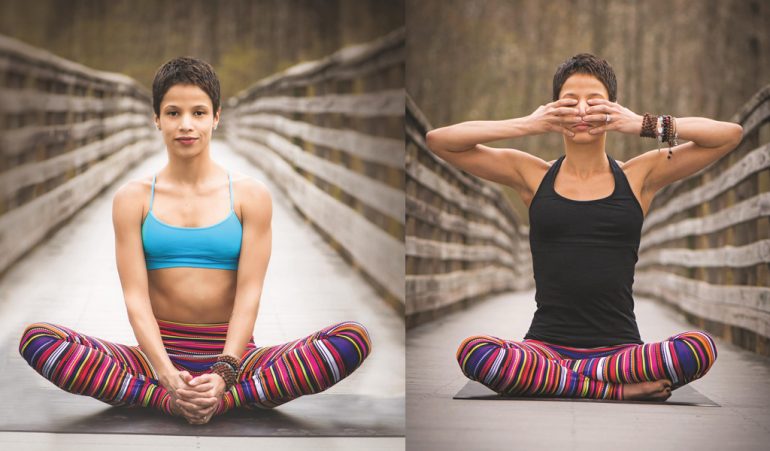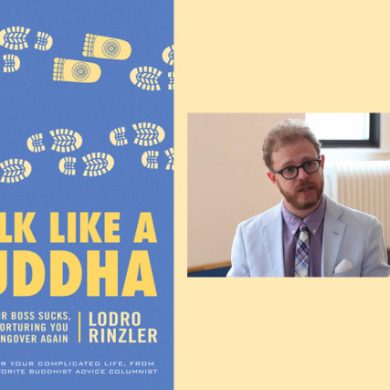Yoga Model: Yulady saluti; Photos by sherry sutton Photography
“If you are depressed you are living in the past. If you are anxious you are living in the future. If you are at peace you are living in the present.” – Lao Tzu.
“Gaining awareness of our bodily sensations through the practice of yoga helps us to achieve a happy mind thought process. Yoga postures also help to release negativity from the body, that is stored in the human system as tension, and negative thinking from the mind. If suffering with acute anxiety a gentle restorative class with focus on breathing is most effective. The calming effect it has on the body, allows the mind to grow more at ease.”
Yoga Practice for Anxiety
Child’s Pose (Balasana)
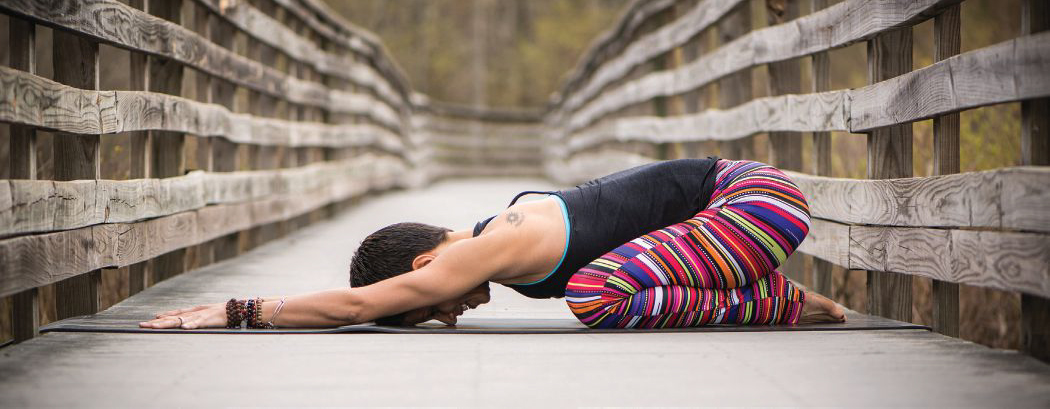
Child’s pose (Balasana) helps to ground the body, to slow down the “monkey mind,” while feeling the support of the ground that is always there to provide us with stability. Come onto the floor, rest onto the knees, bringing hips to press onto the heels, forehead touches the ground, and arms stretch forward with palms touching the ground.
Allow the breath to be soft, without controlling it.
stay in Child’s pose for five to six breath cycles, five inhalations and five exhalations, or for at least one minute. With your hands and knees on the floor, straighten your legs and lift the pelvis up, push away from the floor.
Downward Facing Dog Pose (Adho Mukha Svanasana)
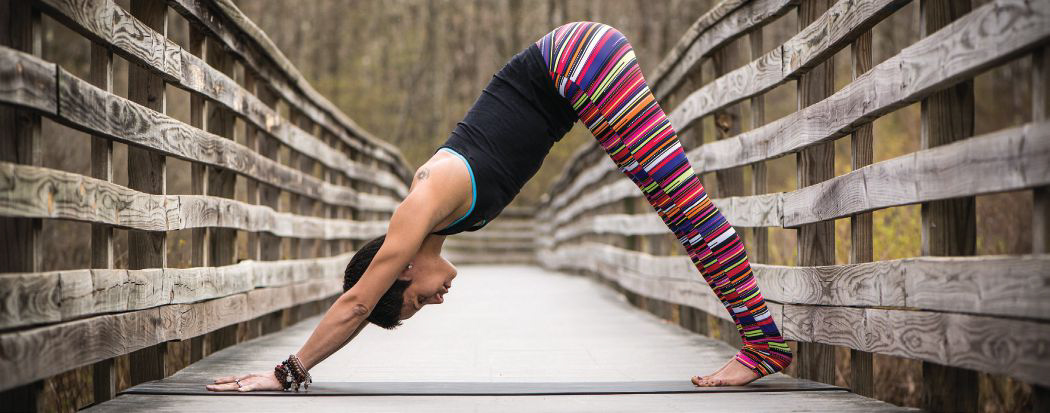
Downward Facing Dog pose (adho Mukha svanasana) is an inversion that also helps to lengthen the spine and stretch the backside of the body. it also helps to eliminate stiffness and back pain, boosts circulation, and it can be modified for all body types.
Keep your arms straight, release the neck, and soften the jaw and the face. Breathe in Downward Facing Dog five to six breath cycles, breathing softly, with full inhalations and exhalations. Focus on the exhalations. stay breathing for at least 60 seconds. return to Child’s pose for an adjustment breath.
Transition onto the belly and prepare for a chest, or heart, opener.
Cobra Pose (Bhujangasana)
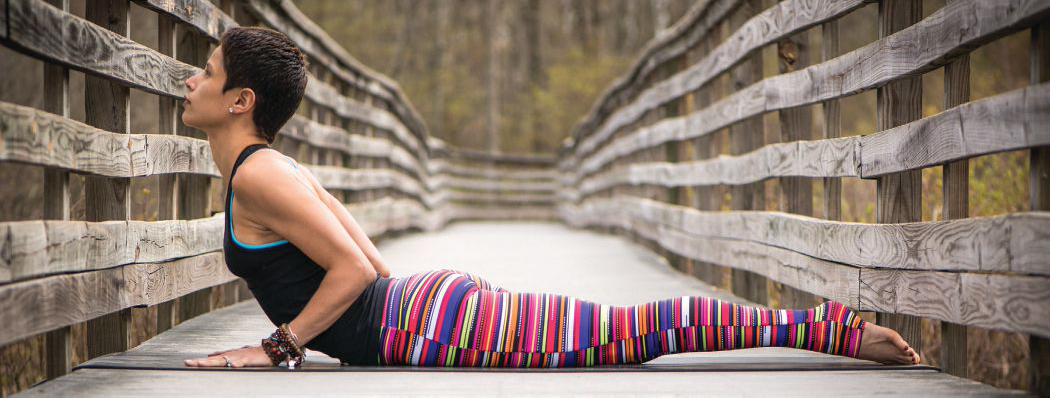
Stretch your legs with the top of your feet facing the floor, with hands pressing under the shoulders, spread all ten fingers evenly, hug elbows into the side of the body, press the top of the feet, your thighs, and pelvis into the ground, rise on the inhalation, straightening the arms, draw the shoulder blades back, come up only as high as the connection with the pubis and your legs. Do not harden the buttocks. on the exhalation lower down, rolling down from the belly, one vertebrae at a time, with the head coming down last to meet the mat.
On each inhalation rise up the highest point of the posture, on the exhalation lower down to the ground, synchronizing the movements with the breath. after five breath cycles of this sequence, hold the posture for 30 seconds, or five breath cycles, then release back to the floor with an exhalation. Press back to Child’s pose for an adjustment breath.
Lie on the back, if needed, place a blanket folded neatly under the shoulders to protect the neck.
Bridge Pose (Setu Bandha Sarvangasana)

Bend knees, with feet on the floor, feet as close to sits bones as comfortably possible. inhale and press through the feet, raising the pubis, tailbone towards the pubis, not hardening the buttocks.
While keeping thighs and knees parallel, with arms and back of hands pressing into the ground, continue to lift the pubis to the navel. Clasp the hands under the back, interlacing the fingers, to help you stay on the tops of your shoulders. (Unless you decide to do this as a vinyasa, synchronizing moment with breath, then keep the arms and hands by the side, with palms facing up, inhale on the lifting and exhaling on the releasing.)
Lift the chin slightly away from chest, connecting the shoulder blades into the back. roll the spine onto the ground. this posture can be held for 30 seconds to 1 minute, with easy breathing, releasing down on the exhalation.
Fish Pose (Matsyasana)
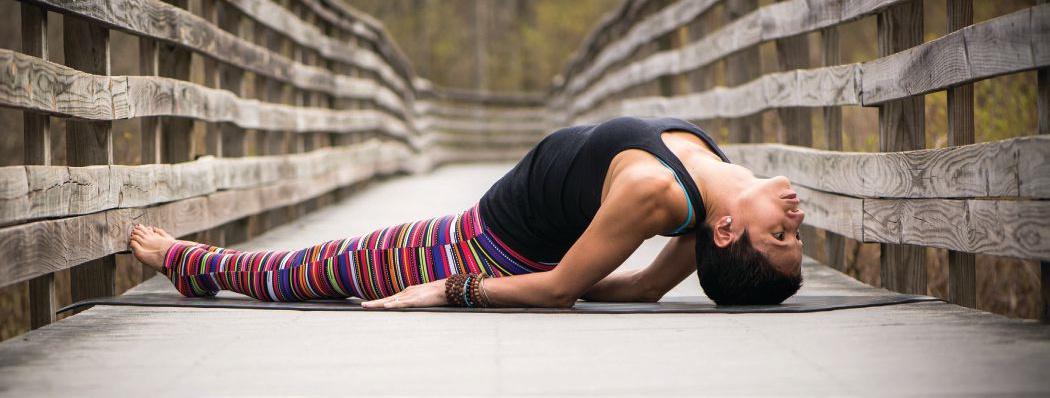
This asana is performed on the back. With bent knees, and legs, slide your hands, palms down, under the buttocks. rest the buttocks on the backs of your hands, tucking forearms and elbows close to the sides of the body, with shoulder blades into the back. inhale to lift the torso and head away from the floor, then release the head back onto the floor, the crown of the head will touch. avoid weight on the head, and crunching in the neck. (if feel crunching in the neck, or strain, come up and put a thickly folded blanket under the back of the head.) Keep the knees bent or straight, if straightened keep the thighs active and press through your heels. Breathe for 15 to 30 seconds. on the exhalation lower the torso and the head to the floor.
Roll over onto belly in preparation for next pose.
Locust Pose (Salabhasana)
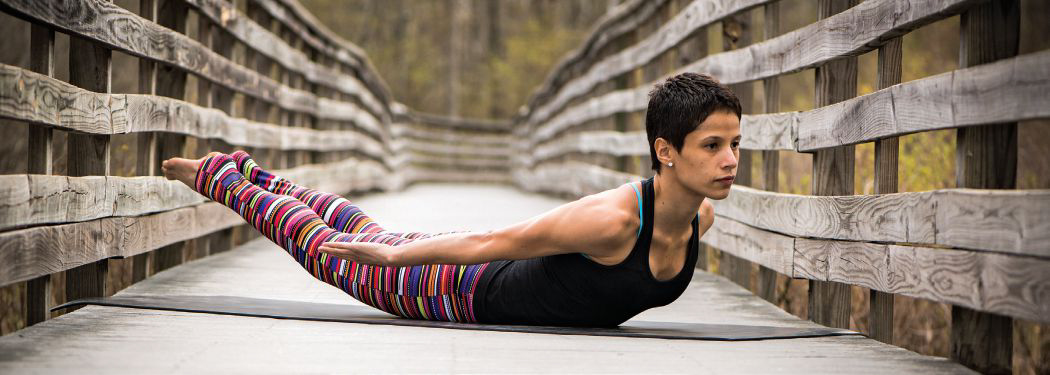
For this pose, some find a folded blanket under the pelvis up to the lower ribs comfortable.
Lie on the belly with arms alongside, palms facing up, forehead on the floor. Firm the buttocks, inhale and raise head, torso, arms and legs, while resting on lower ribs, belly, and pelvis. reach strongly through the legs, big toes pointing towards one another, arms stay parallel to the ground, stretch through the fingertips. Press shoulder blades into the back, keep the back of the neck long, stay in the postures for 30 seconds, or for five breath cycles, then release resting on with head turned to the side.
To counter the energy-producing effects of the past few postures, and to emphasize releasing anxiety, one of the most restorative, or passive postures, is:
Legs-Up-The-Wall Pose (Viparita Karni)
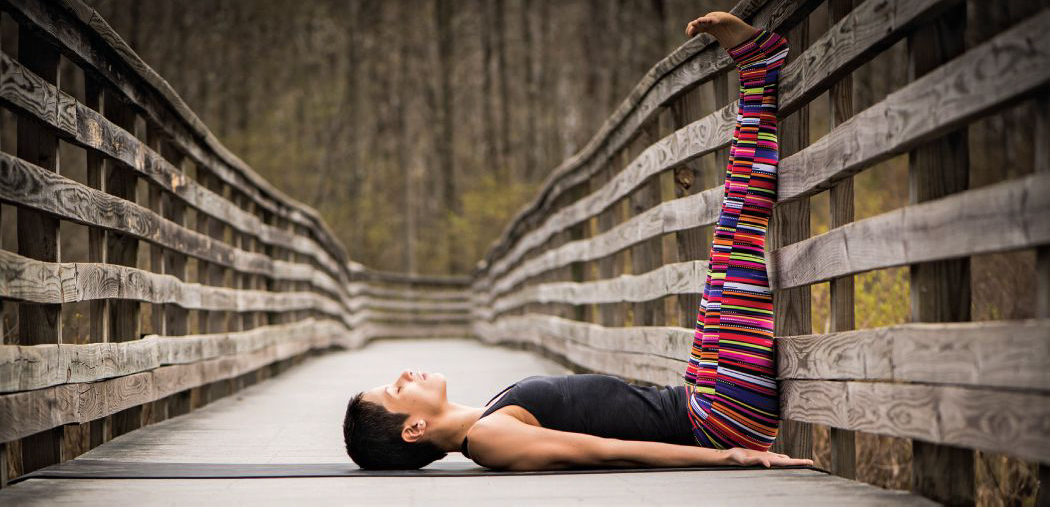
This is a variation of a supported shoulder-stand. a blanket, or bolster, is ideal to place under the hips. start further away from the wall, if more flexible, a support can be higher and closer to the wall.
Start by lying down and sitting sideways on the edge of the support, swing the legs up onto the wall, with head and shoulders lightly on the floor. (it takes time getting used to coming into this posture, so if you fall off, try again, it is very common to fall off the support the first few attempts. sometimes moving it further from the wall helps.)
Bend your knees once the legs are up the wall, and lift the pelvis off the support, to help align the body so that it is squared off with the wall, the spine should be in line and not at an angle. Hold the legs vertically in place. relax and allow the thighs, and weight of the belly, to rest deeply in the back of the pelvis. stay breathing softly with eyes closed for 5 to 15 minutes. Close eyes and relax.
When coming out, slide off the support before turning onto your side. Lie on your side for a few breaths to allow the blood to recirculate through the legs.
Finish the asana practice with a final rest:
Corpse Pose (Shavasana)
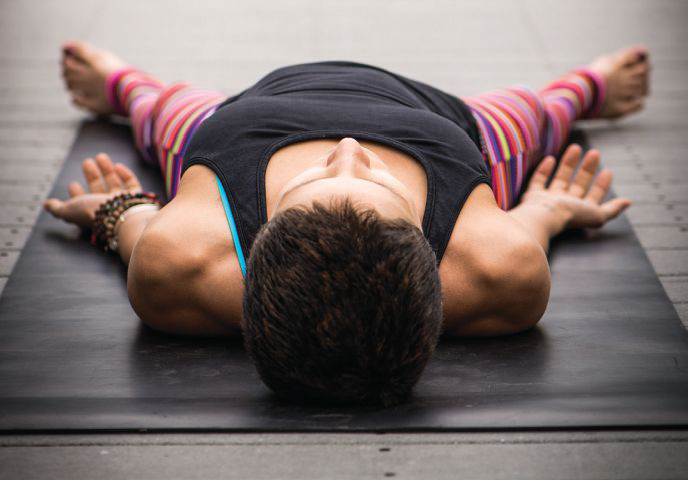
Lie on the back, with palms facing up, feet fall open, cover with a blanket to prevent getting a chill, with eyes closed, covered if you like with a eye pillow, rest in corpse pose for 10 minutes.
Humming Bee Breath (Bhramari Pranayama)
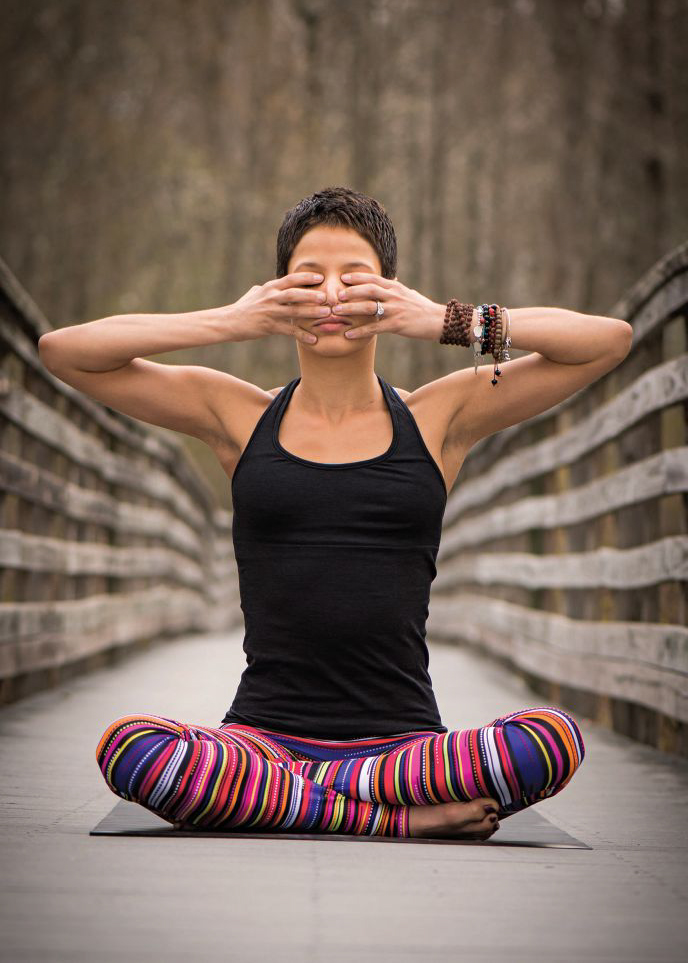
After shavasana, try a breathing exercise, where the exhalation is longer than the inhalation. Bee breath (Bhramari Pranayama) named after the humming sound that bees make is soothing and effective for releasing tension and anxiety. Lengthening the exhalation without excessive strain also is beneficial.
Sit comfortably. spine straight, one may sit with the back against the wall if it is more comfortable, or in a chair. With closed eyes, take a few natural breaths, then with lips lightly sealed, inhale through the nostrils, exhale and make the letter sound, “M,” a humming sound.
Inhale as needed and continue making the humming sound on the exhalation. the longer the exhalation (bee sound) the more relaxing it will become. Forcing the breath, however, can have a reverse effect and create more tension in the body, be sure not to go beyond a comfortable capacity.
Sit afterwards with quiet awareness on the subtle changes in the breath, and body sensations.
Meditate on the gift of relaxation created through the asana practice, the buzzing bee breath, and the relaxed mind with fewer distractions and the greater sense of calm and peaceobserve how the mind works, and how this practice can help us not to worry too much, or become anxious of the future. While sitting in the awareness of contentment, cultivating a positive outlook by focusing on what we can do for others, while accepting that everything around us is temporary and in a constant flux of change. When we become more grateful for what is being given in the present moment we are less likely to dwell in the past, or worry about the future. Lastly, keep positive company around, spending time with positive people helps to influence our own overall positive attitude. “only a positive mind can produce peace.”
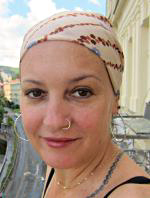 Krista Angelique began practicing yoga in 1999. She completed “The Heart of Yoga” training at Krishnamacharya Yoga Mandiram in Chennai, India. She’s studied Iyengar Yoga with Gabriel Halpern of Chicago, completed Yoga Teacher Training in California in Vinyasa Flow with Trevor Trice, Amy Caldwell and Rolf Gates. As a formerly trained modern dancer, she brings her love of movement to each of her classes.
Krista Angelique began practicing yoga in 1999. She completed “The Heart of Yoga” training at Krishnamacharya Yoga Mandiram in Chennai, India. She’s studied Iyengar Yoga with Gabriel Halpern of Chicago, completed Yoga Teacher Training in California in Vinyasa Flow with Trevor Trice, Amy Caldwell and Rolf Gates. As a formerly trained modern dancer, she brings her love of movement to each of her classes.

